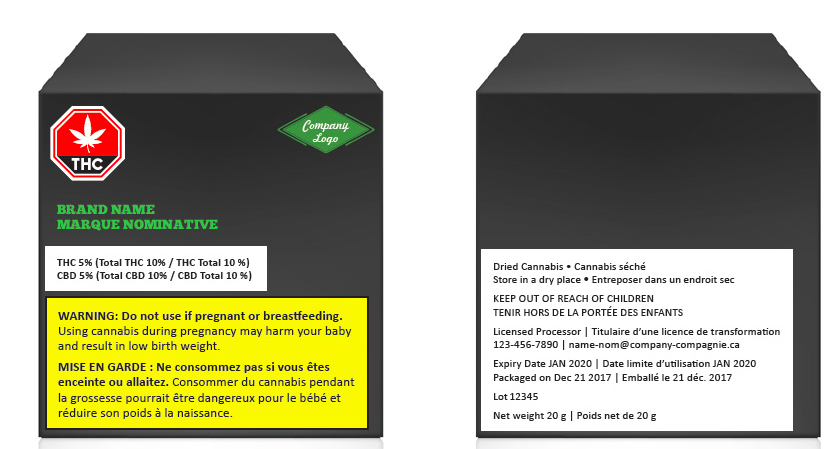Two weeks ago, Canada finally legalized cannabis for retail sale and we saw products packaged in very generic-looking containers. Each container featured a stop sign-style THC warning and a bright yellow panel warning that cannabis can be addictive. We had been made aware from Health Canada announcements that Canada’s legalized cannabis would have to be sold with plain packaging, many restrictions, and required health warnings, and this has lead many cannabis producers to wonder how effective cannabis branding could ever be possible.
In the short term, these packaging rules won’t hinder the market due to the current high demand of cannabis, but Licensed Producers (LPs) want ways to distinguish their brand via packaging and also through advertising (a separate topic). Branding can be applied to packaging for cannabis products and accessories (things commonly used to consume cannabis, if sold with cannabis), but there are significant limitations.

Health Canada’s Cannabis Packaging Guidelines
The Cannabis Act and associated regulations include stringent rules surrounding the marketing of “cannabis products”, which include cannabis and certain types of cannabis accessories. These rules are for protecting children and for increasing public awareness of health risks, but are restrictive from the perspective of maximizing revenue and building market share. Branding and marketing by Licensed Producers must be executed in ways so as not to target or be accessed by children. Promoting consumption in any way is also not allowed.
Logos can only be a single colour, with no metallic or fluorescent finishes. Images or any representation of celebrities, characters, endorsements, or any association with extravagance are some other prohibited examples.
Trademark applications for words and symbols have been filed by many LPs, but not many are being accepted, due to missed criteria.
In addition to words and designs, containers and shapes of goods can also be a trademarked. However, the Act prohibits the sale of cannabis or a cannabis accessory with an appearance, shape or sensory attribute or function (such as a smell or sound) that could reasonably appeal to children. Under the Act, trademarked cannabis packages would have to be opaque and child-resistant, with a bright yellow health warning similar to those used on tobacco products.
The Act thus restricts specific types of cannabis branding elements that can be used, like certain brand names, trade names, trademark, logo, design, distinguishing guise, and slogans.
Confusion often arises when navigating through the Act and Regulations while trying to determine how to proceed through brand development and getting your brand to market. Let dicentra Cannabis Consulting help you with comply with all your cannabis branding and marketing related projects. We are Canada’s premier consulting group when it comes to navigating Health Canada’s advertising, labelling and marketing restrictions across most consumer product categories.
1-866-647-3279 | info@dicentra.com
dicentra Cannabis Consulting is committed to keeping you well informed and educated on the Cannabis Act and the Canadian cannabis regulatory framework which came into force on October 17, 2018. We are committed to providing you with updates, trends, and information in this new regulatory landscape.